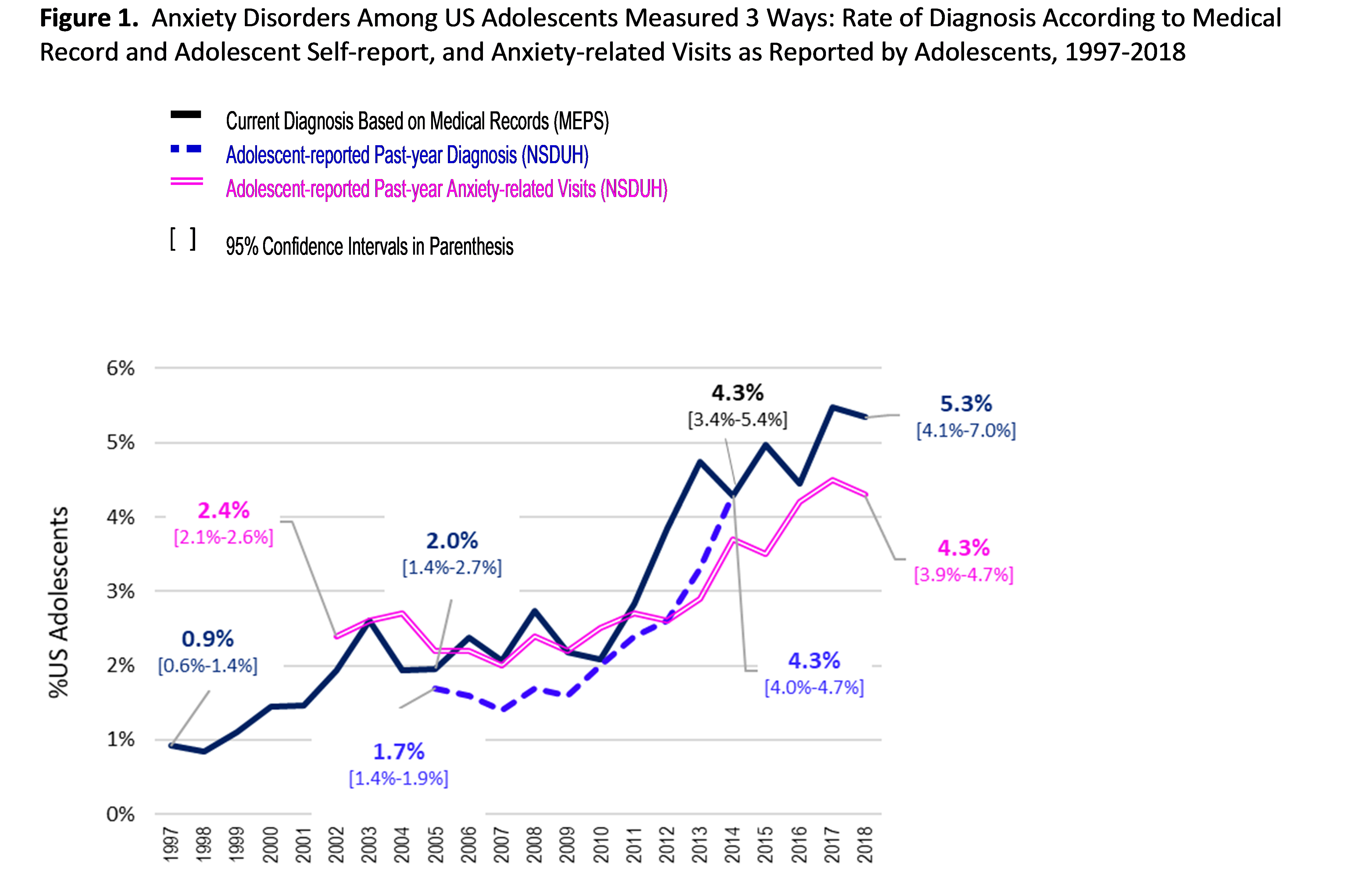Tang SF, Larson K, Gottschlich E, Cull W
Presented at the 2021 Pediatric Academic Societies Annual Meeting
Background: Studies have found that untreated chronic anxiety increases substance abuse, depression and suicide risks among children. However, few recent studies have focused on whether there has been an increase in anxiety disorder among US adolescents.
Objectives: Using 3 different measures from 2 separate national datasets, track and examine pre-pandemic rates at which US teens ages 12-17 sought treatment for or received diagnosis of anxiety disorders over 2 decades.
Design/Methods: We examined trends in (a) medical record-based diagnosis of anxiety disorders (from the Medical Expenditure Panel Survey (MEPS) 1997-2018, N=66,784), (b) self-reported past-year diagnosis (from the National Survey on Drug Use and Health (NSDUH )2005-14, N=176,060), and (c) self-reported anxiety-related visits, defined as visits to inpatient hospitals, residential centers, day treatment programs, mental health clinics, pediatricians, family physicians, therapists, and in-home counselors attributed to feeling afraid or tense (NSDUH, 2002-18, N=285,133). MEPS and NSDUH use national samples weighted to represent the US population. We used multivariable logistic regressions to examine changes by the 3 indicators over time, adjusted for age, sex, race/ethnicity, family income and health insurance.
Results: All 3 indicators of anxiety showed notable increases over time (p < .01; Figure 1). 5.3% of teens had received a diagnosis in 2018, compared to 0.9% in 1997 according to medical record-based MEPS data. Teen-reported past-year diagnosis increased from 1.7% to 4.3% from 2005 to 2014 based on NSDUH; MEPS rates were similar. 4.3% of teens reported anxiety-related visits in 2018, up from 2.4% in 2002. Results of the logistic regressions (Table 1) showed increases over time for all 3 measures (adjusted odds ratios of 1.09, 1.14 and 1.05, respectively, p < .01) after adjusting for subgroup differences. Adolescents who were female, non-Hispanic white, older, from higher income families, or insured, were more likely to seek treatment for or receive diagnosis of anxiety disorder.
Conclusion: Multiple measures in national surveys show consistent trends of increased anxiety disorder among US adolescents over the last 2 decades. These increases occurred prior to the pandemic. It will be important to monitor additional potential increases during the pandemic and to understand subgroup differences and the effect of access to care.


Last Updated
07/14/2021
Source
American Academy of Pediatrics